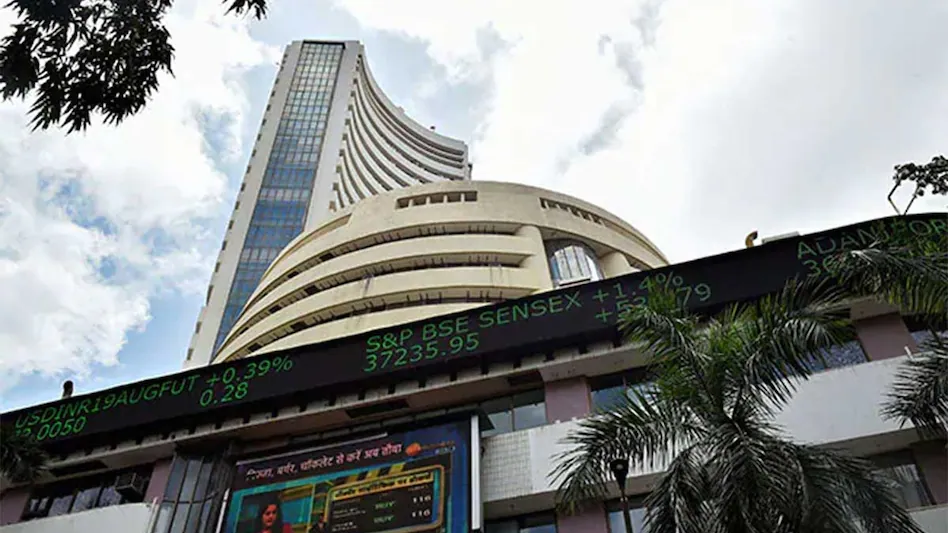The Sensex includes premium equities that represent a whole or specialized sector of the Indian stock market. Its role goes beyond representation, helping clients make informed, wise investment decisions quickly and effectively.
The Indian stock market boasts immense scale and notable volatility. Navigating every individual stock within this vast universe can prove challenging, particularly for novices and inexperienced investors. This is where market indices like the Sensex play a pivotal role.
The Sensex encompasses premier stocks that mirror a particular sector’s entire or segment within the Indian stock market. Its function extends beyond representation, aiding investors in making well-informed and prudent investment choices with efficiency and timeliness.

Sensex Meaning
The word Stock Exchange Sensitive Index is where the abbreviation “Sensex” comes from. One of the first stock market indexes in India, it consists of a carefully chosen group of 30 well-known stocks that are all listed on the Bombay Stock Exchange (BSE), one of the country’s most important stock exchanges. These selected equities are very liquid and actively traded because they largely represent the largest and most thriving firms in the nation.
The only entity with the authority to periodically change the makeup of these 30 chosen stocks is the Bombay Stock Exchange. The index can remain current and representative of the market’s dynamism because to its flexibility. The Sensex’s constituents are rearranged semi-annually in June and December to keep the index current and a good representation of the changing market environment.
How is the Sensex Calculated?
Now that you are aware of what the Sensex is, let’s examine how its value is determined. The free float market capitalization approach is used to calculate the value of the Sensex and uses the following formula:
Free Float Market Capitalization = Market Capitalization X Free Float Factor.
The market capitalization measures a company’s total market value and is calculated as follows:
Market capitalization = Share Price per Share X Total Number of Issued Shares by the Company.
The percentage of a company’s total issued shares that are easily available for trade by the general public is known as the “free float factor.” Shares owned by promoters or under government control that cannot be traded publicly are not included in this criterion.
Sensex Significance
- Market Sentiment Barometer: The Sensex is often considered a mirror reflecting investor sentiment. A rising Sensex typically denotes confidence and optimism in the economy, whereas a falling Sensex can denote doubt or pessimism.
- Economic Health Indicator: As the Sensex monitors the performance of important corporations in numerous industries, it provides information on the state of the economy as a whole. A rising Sensex may imply strong economic growth, while a falling one may portend difficulties in the future.
- Investor Confidence: The Sensex is crucial in determining how investors behave. Positive movements can encourage greater investments, whilst a fall might make investors more risk-averse or cautious.
- Policy Implications: Government policies and decisions can impact the Sensex, and conversely, the Sensex can influence policy decisions. For instance, big market fluctuations may result from important economic reforms or fiscal releases.
How to Invest in Sensex?
- Opening a Demat Account: The user must have a Demat account before beginning any trading operations. Your shares are stored electronically in this account, enabling safe and paperless ownership.
- Opening a Trading Account: A trading account can be opened by signing up with a regulated broker or a reputable brokerage platform, and then creating a trading account. Since direct securities transactions are not permitted on the Bombay Stock Exchange (BSE), this step is very important. Your trading account gives you the tools you need to easily purchase and sell stocks online.
- Ensure Possession of a Bank Account and PAN Card: To participate in trading operations on the Sensex, an investor needs a demat account, a trading account, a functioning bank account, and a PAN card that is current.
- Select Your Investment Ventures: You are given the freedom to invest in the various Sensex elements, each of which is distinguished by its own weight within the index, once the necessary accounts have been successfully formed.
It is important, nonetheless, that a more responsible strategy for investing in the Sensex entails concentrating your efforts on index mutual funds or Exchange-traded funds (ETFs). These investment vehicles give a possibly more effective path for capital growth by providing a thorough and diversified exposure to the Sensex.
Conclusion
The Sensex is far more than just a list of figures. It captures the dynamism, uncertainty, and aspirations of the Indian economy. In the financial ecosystem, the Sensex occupies a special place as a gauge of investor sentiment and economic health.
Market participants, officials, analysts, and investors all keep a close eye on its changes. Understanding the Sensex entails more than just deciphering financial lingo; it also entails being able to feel the pulse of a country’s economic development and its long-term goals.
FOR MORE INFO CLICK THIS SITE:https://learningsharks.in/
FOLLOW OUR PAGE:https://www.instagram.com/learningsharks/?hl=en
